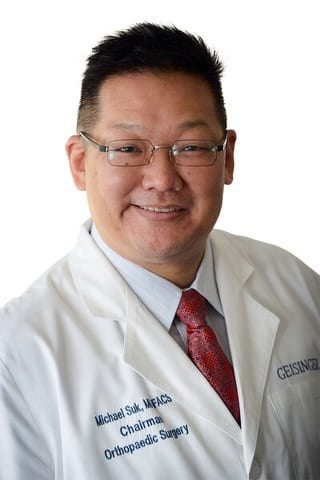Back to school might not mean back to the classroom this year – or back to official school sports. But young athletes who want to stay at the top of their games are still going to take to the fields, with or without the guidance of coaches and trainers.
Practice. Practice. Practice. It’s the only way to improve your game. Right?
Unfortunately, practicing a repetitive motion like throwing can damage bones, muscles, ligaments, and tendons. Our sports medicine clinics see these overuse injuries all the time – and unfortunately, we’re seeing them happen to younger kids.
Many kids today, hoping to be superstars in the future, are concentrating on a single sport too early. That puts repetitive stress on muscle groups and can lead to physical burnout. Children and teens are at an increased risk for overuse injuries because their bones are still growing and are less resilient than those of adult athletes. Young people should be encouraged to try a variety of sports and not think about specializing until age 15 or 16.
Overuse injuries start subtly, with pain after physical activity. Gradually, pain occurs during physical activity without affecting performance. But before you know it, the pain affects performance and your child might be on their way to chronic pain, even at rest. Pain that could affect them into adulthood.
Ice can help with inflammation while ibuprofen can be used for soreness. But the best course of treatment for overuse is rest, especially from the activity that led to the pain. If your kids are forcing themselves to “play through the pain,” make sure they stop and rest instead. Young bodies need time to heal.
Other changes you can make to protect your children in the future – and make them better athletes now – include increasing their training time no more than 10 percent per week. Include a variety of activities in endurance workouts, such as running, swimming, biking, or elliptical trainers. And athletes of all ages should warm up properly and stretch before beginning strenuous activity.
If overuse symptoms persist even after taking a break from training, it’s time to take your child to a doctor, especially if they’ve lost full-range motion in any of their joints. Geisinger’s pediatric orthopaedic surgeons have specialized training to diagnose and treat bone, joint, and muscle problems in children. With the largest concentration of sports medicine providers in the region, we care for lots of university and high school athletes, as well as professional hockey and baseball teams.
We understand athletes. We understand kids. And most importantly, we understand that your young athlete is still a kid with growing bones – and we know how to treat them accordingly.
Your child will want to get back in the game as soon as possible. But with time off and proper care, they can avoid future complications like osteoarthritis. Our sports medicine team is dedicated to keeping them at the top of their game — even as adults.
Michael Suk, MD, JD, is chair of the Geisinger Department of Orthopaedic Surgery.



